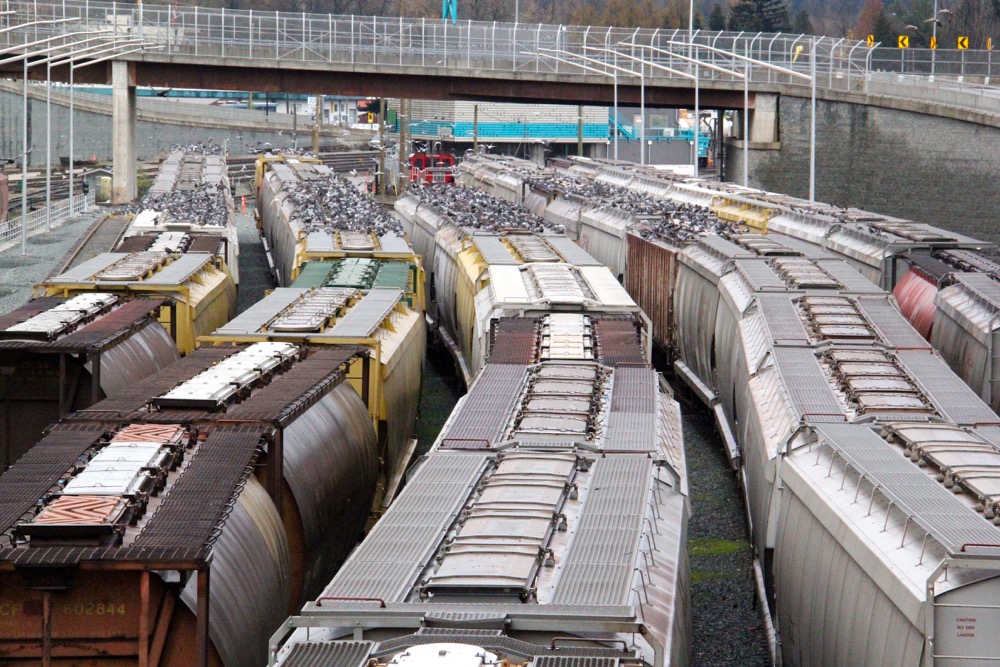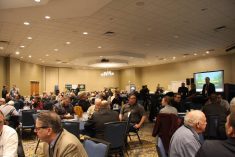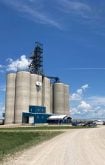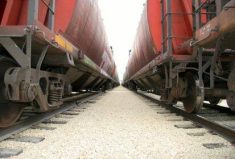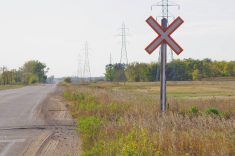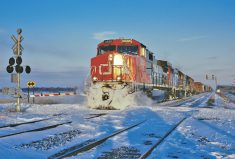One thing most farmers and the railways agree on is the current fleet of aging government and publicly owned grain hopper cars soon needs to be replaced.
Doug MacDonald, CN’s vice-president of bulk commodities, told representatives from the Alberta Federation of Agriculture (AFA), Agricultural Producers Association of Saskatchewan and Manitoba’s Keystone Agricultural Producers (KAP) Nov. 15 the cars are close to the end of their 50-year lifespan. The annual attrition rate is five to 10 per cent or around 400 cars, he said.
Steve Pratte, a policy analyst with the Canadian Canola Growers Association, agrees car numbers are dropping and need to replaced.
Read Also

Mazergroup’s Bob Mazer dies
Mazergroup’s Bob Mazer, who helped grow his family’s company into a string of farm equipment dealerships and the main dealer for New Holland machinery in Saskatchewan and Manitoba, died July 6 from cancer.
“The pace of that decline will accelerate noticeably in 2022 when the Alberta government’s current 900-car fleet reaches the end of its economic life, and is withdrawn from service,” Pratte wrote in a paper. “A more significant reduction will follow between 2025 and 2027 when the remnants of 3,600 federal hopper cars bought in the mid-1970s are slated for retirement, which will reduce the residual to an estimated 4,300. By 2035, virtually all of the remaining cars will have been retired as well.”
That raises questions about how to replace them, and more importantly, who will pay?
The answer to the latter is almost certainly farmers. The federal government is unlikely to. And if the railways, car-leasing companies or grain companies buy the cars, which costs about $100,000 each, the cost will be passed back to farmers through freight charges.
“Do we want CN to own these cars? If you don’t have grain cars it doesn’t matter how many people or locomotives you have. You can’t move the grain,” Canadian Federation of Agriculture vice-president Humphrey Bannock said after he and other farmers met with CN Rail officials.
“Maybe farmers should own them,” added Alberta Federation of Agriculture president Lynn Jacobson.
“Should we have a pool of cars that we can have on the spot and lease them out to whoever wants to pull them? We are paying for it anyways,” said KAP president Dan Mazier.
Whoever owns the cars needs to be compensated, MacDonald said. If it’s the railways, the maximum revenue entitlement, which regulates railway earnings from shipping grain, must be adjusted, he said.
If it’s farmers or grain companies the rates charged to ship grain should be reduced.
Pratte’s paper says there are 22,000 cars and about half (11,500) are publicly owned. That shows the railways have been replacing the publicly owned cars by buying or leasing cars. And while the Canada Transportation Act reflects “the incremental costs of obtaining cars arising from the sale, lease, withdrawal or disposal of the government hopper car fleet, as well as those incurred for their maintenance,” there have been issues on how the Canadian Transportation Agency, which administers the act, interprets “government fleet” and “incremental cost,” Pratte wrote.
“While the MRE is in force, additional consideration may well need to be given to the existing treatment of replacement hopper cars, particularly if it is not to undermine the investment that will be required.”
CN’s MacDonald made the same point.
Although every investor wants a good return from an asset farmers might look at investing cars differently. Given that farmers will pay for the cars whoever owns them they might be prepared to earn less so long as they gain enough through lower freight charges and better service.
Pratte’s paper notes that not every car needs to be replaced. The cars hold more now, trains are longer and turning faster, which means fewer cars are needed. He estimates for every 10 cars that are retired nine replacements are needed.






